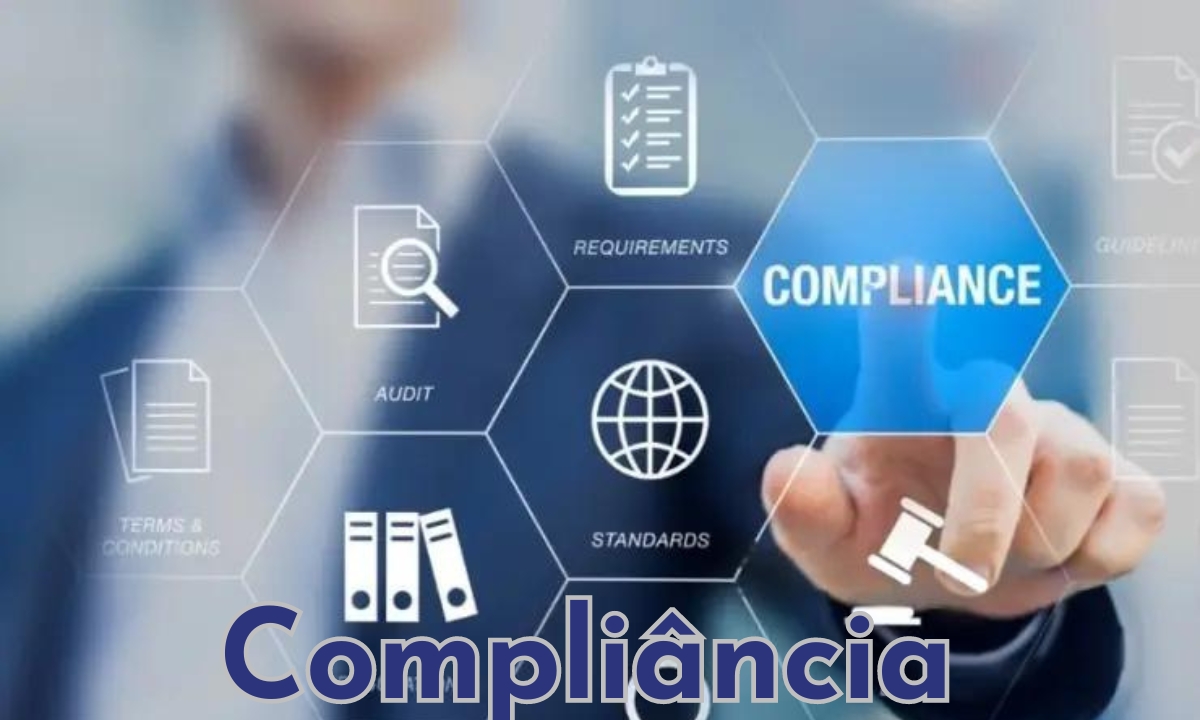Blog
A Guide to Navigating the World of Compliância

Compliância
The term “compliância” has recently gained a lot of attention. It alludes to the proactive responsibility of associations to follow a bunch of rules, guidelines, and moral necessities. These prerequisites can be spread out by industry bodies, administrative specialists, or the actual association. A definitive objective of compliância is to guarantee that the venture’s tasks are led in a lawful, moral, and straightforward way.
In this article, we will dig into the key viewpoints, elements, standards, and practices of compliância. Additionally, we will talk about how to successfully implement a compliance program. Our point is to give you an extensive comprehension of compliância, so you can guarantee that your association is a decent corporate resident.
Key Parts of Compliância
Compliância is a wide idea, and understanding its key perspectives is fundamental for any association expecting to flourish in a directed climate. Some of these aspects are:
Compliance with Laws and Regulations The foundation of compliance is ensuring that your business complies with all relevant laws and regulations in your sector.
Moral Norms
Compliância goes past legitimate necessities; Maintaining high ethical standards is also a part of it. This might incorporate practices connected with straightforwardness, genuineness, and corporate obligation.
Risk The board
Recognizing and relieving gambles with that could endanger your association’s consistence and moral principles is a urgent part of compliância.
Information Protection and Security
In a period of expanding information breaks, safeguarding delicate data is necessary to compliância. Consistence with information security guidelines, as GDPR or HIPAA, is an unquestionable necessity.
Understanding the key features of compliance is essential for implementing a robust compliance program:
Through questionnaires, metrics, and ratings, risk assessment enables companies to identify, evaluate, and prioritize compliance risk areas. Helps construct a gamble based consistence program.
Strategy The board
Unifies and deals with an association’s arrangements and strategies. includes attestation tracking, automated policy distribution, and version control.
Commitments The executives
Tracks consistence prerequisites and cutoff times across guidelines and principles. Gives alarms and suggestions to impending reestablishments and filings.
Internal and external audits, corrective actions, and remediation procedures are managed by Audit Management. Incorporates review planning, discoveries following, and revealing.
Preparing The executives
Directs and tracks representative preparation programs. Incorporates web based instructional classes, tests, and consistence preparing schedules.
Occurrence The board
Logs consistence occurrences, examinations, and remediation. facilitates analysis of the causes.
Investigation and Revealing
Produces investigates consistence measurements like gamble evaluations, control testing, preparing consummation, and that’s only the tip of the iceberg. Empowers information driven experiences.
Work process Mechanization
Naturally courses undertakings and reports to fitting staff.
The Practice of Compatibility Compatibility goes beyond merely meeting legal requirements; It has a commitment to social responsibility, sustainable business practices, and ethical behavior. It’s tied in with guaranteeing that an association is a decent corporate resident, according to the law as well as according to its partners.

The Effects of Resistance Resistance could have a significant impact on businesses. There are a few possible outcomes, including reputational damage, jail time, and fines. In any case, it’s not just about keeping away from outcomes; it’s additionally about encouraging trust and dedication among clients, clients, and workers.
Building Trust and Reputation
Trust is the cash of the advanced business world. Even if it isn’t required by law, organizations that place an emphasis on compliance demonstrate their commitment to doing the right thing. This responsibility constructs a standing for unwavering quality and moral lead, which, thusly, cultivates client devotion.
Employee Confidence and Maintenance Compliance is about more than just relationships with other people; it likewise assumes a basic part in inside organization culture. Workers who feel that their association is focused on moral lead and consistence are bound to be locked in and spurred.
All in all, compliância is a multi-layered idea that assumes an essential part in the realm of business and guideline. It’s about making sure a company is a good corporate citizen, following legal and ethical rules, and earning the trust and loyalty of its stakeholders. Organizations can reduce risks, safeguard sensitive information, and establish a reputation for reliability and ethical behavior by implementing a robust compliance program. Keep in mind that compliance is more than just a legal requirement; it’s a promise to making the best decision.
FAQS
What is compliância, and for what reason is it significant?
Compliância alludes with the demonstration of complying to regulations, guidelines, rules, or norms pertinent to a particular industry or setting. It is critical on the grounds that it keeps up with lawfulness, moral direct, and responsibility in business activities 1.
What are the repercussions of not complying?
Inability to follow compliância guidelines can bring about lawful results, fines, or even lawbreaker accusations. Non-compliância can likewise spoil an association’s appearance and disintegrate trust 1.
Are compliância prerequisites the equivalent for each industry?
The requirements for compliance can be very different from one industry to the next. Be that as it may, the ongoing idea is the need to guarantee straightforwardness, reasonableness, and responsibility 1.
How does innovation influence compliância?
Innovation essentially affects compliância. It has made it more straightforward to gather, store, and dissect information, however it has additionally expanded the gamble of information breaks. Subsequently, information security guidelines assume a huge part in guaranteeing that delicate data stays safeguarded 1.
What are the most common problems that businesses have with compliance?
Normal consistence issues incorporate information breaks, charge consistence, administrative changes, and work environment wellbeing concerns.
Blog
The Role of a Private Investigator in Modern Day Investigations

As the complexity of society’s challenges grows, the demand for specialized problem-solving skills surges. This is particularly true for those skilled in investigation. Far more than the cloak-and-dagger figures of fiction, today’s private investigators are highly-trained professionals offering their services in numerous situations, from unraveling corporate espionage to personal family matters. This deep dive explores the modern private investigator’s role, laying bare the reality behind the mystique and illuminating how critical these specialists have become in resolving investigative puzzles.
What Is a Private Investigator?
Private Investigators, such as the private investigator Rochester NY, are professionals trained and hired to collect information and verify facts where there is a need for independent investigative work. They do not replace the police but serve a distinct niche, assisting private individuals, law firms, corporations, and sometimes even government entities. Their work requires the ability to remain inconspicuous while observing situations closely, offering services that bridge the gap between law enforcement’s limitations and an individual’s capacity for seeking truth and security.
Services Offered by Private Investigators
From assisting individuals with personal concerns to conducting complex, multi-faceted investigations for businesses, the services provided by Private Investigators are as diverse as they are essential. Services include but are not limited to diligent surveillance operations—often for long hours under challenging conditions—to glean necessary information without being detected. Background checks are another standard service used to verify a person’s history for employment, relationships, or legal matters. In today’s connected world, locating missing persons or assets can take PIs across digital and physical plains as they piece together clues left behind. When fraud or theft puts personal or corporate assets at risk, PIs step in to follow the paper trails that may lead to justice. Personal security consultations by PIs can also enhance one’s privacy strategies in a world where information is easily accessible.
Essential Skills and Techniques in Private Investigations
The toolkit of a Private Investigator is filled with a range of skills that include, but are not limited to, physical surveillance, cyber-investigations, and legal knowledge. Observation and surveillance form the backbone of many PI operations, relying on discretion and vigilance to capture crucial incidents without raising suspicion. To keep pace with the digital age, PIs cultivate proficiency in cyber investigations—tracking digital footprints and securing evidence from online sources. Crucial to their professionalism is a deep understanding of legal guidelines and ethical considerations that bind their operations. This ensures the evidence collected is legitimate and admissible in any potential legal proceedings.
Clearing Misconceptions About Private Investigators
Despite the modern PI’s significant role, misconceptions about their practices persist. Far from the lone rogue operating above the law, Private Investigators must adhere to legal constraints and ethical guidelines. Most of their work is performed with the same straightforward diligence as any professional investigation, devoid of the drama and moral ambiguity often assigned to them by pop culture.
Finding a Dependable Private Investigator
Choosing a Private Investigator is a task laden with the need for trust and assurance. The process must start with confirming the legitimacy of their operation: verifying their credentials, assessing their professional experience, and ensuring they have the proper licenses to practice. A credible PI will have an established track record, exemplified by references and testimonials, which prospective clients should diligently review. An initial meeting will often reveal their commitment to an ethical code, as well as the level of professionalism with which they handle sensitive information and legal boundaries.
Navigating Legalities: The Boundaries of Private Investigation
Private Investigators operate under strict legal frameworks, respecting privacy laws and avoiding actions that would breach their client’s or subject’s legal rights. They’re barred from breaking, initiating unwarranted electronic surveillance, or engaging in harassment. Clients must understand that PIs cannot operate outside the confines of legality, upholding the investigation’s integrity while avoiding legal backlash. For more details on the legal clearances and requirements of PIs, one can consult information provided on the Bureau of Labor Statistics site.
Case Files: The Impact of Private Investigators
The accurate measure of a Private Investigator’s worth is seen in the outcomes they produce. The archives of PI work are filled with stories that have made tangible differences in people’s lives, such as reuniting families or aiding in the conviction of criminals by providing critical evidence. To further illustrate the significant role of private investigators in sensitive areas, Psychology Today discusses their involvement in stalking cases, where the need for experienced investigative work is paramount in ensuring the safety and peace of mind of victims. The careful, methodical work of Private Investigators often unfolds behind the scenes. Yet, the ripples of their diligence are felt far and wide, proving that in the world of investigations, the work of these dedicated professionals is both vital and valued.
Blog
The Benefits of a LEMIS Superfood Vegan-Friendly Facial

If you follow a vegan lifestyle, you may wonder how to get a nourishing facial without compromising your values. LEMIS superfood facials offer an animal-free alternative using ethically sourced botanicals. Discover the many benefits this vegan facial provides.
Cleanses Skin Gently
The LEMIS facial starts with a light cleansing using a plant-based oil like jojoba, sunflower or argan. This gently dissolves impurities without stripping the skin’s natural moisture like harsh soaps can. Your aesthetician may also steam your skin to open pores. The steam softens and loosens debris in pores to be washed away more easily.
Exfoliates with Fruit Enzymes
Next, fruit enzyme exfoliation lifts away dull surface cells using natural acids from papaya, pineapple and apple. This reveals brighter and smoother skin. It’s gentler than abrasive scrubs. Enzymes also provide antioxidant protection against free radicals caused by pollution.
Stimulates with Massage
Your aesthetician will massage the face, neck and shoulders to increase circulation and relax muscles. Soothing massage strokes boost collagen production, drain accumulated lymphatic fluid and relax facial tension for a sculpted, glowing look. Targeted facial massage techniques like effleurage, petrissage and tapotement also help product penetration by working active ingredients into the skin. This optimizes their nourishing effects.
Nourishes with Superfoods
LEMIS uses concentrated superfood serums packed with antioxidants, essential fatty acids, vitamins and minerals. Ingredients like algae, sea buckthorn, green tea, ginger and acai nourish skin with protective phytonutrients. Your skin will look plumper and more vitalized. These serums are made from cold-pressed extracts to retain the potency of the raw superfoods. Nutrients are delivered in their most active form for optimal absorption.
Hydrates Intensely
A hydrating mask infuses your skin with nourishing botanical oils and plant butters like avocado, jojoba, shea and cocoa. Dry, depleted skin drinks up this deep hydration. The oils help reinforce the skin’s moisture barrier too.Hyaluronic acid also attracts and binds moisture to the skin for next-level hydration. This visibly plumps up fine lines and wrinkles, resulting in a dewy, glowing complexion.
Soothes with Botanical Oils
To complete the facial, your aesthetician will massage the face with antioxidant facial oils like raspberry seed, carrot seed or pomegranate. This soothes any residual redness, while the botanical oils protect against environmental damage. Essential oils may also be incorporated for their anti-inflammatory, antiseptic and mentally uplifting aromatherapy benefits. This enhances the relaxation effects.
A superfood facial from LEMIS brings all the nourishing benefits of real, whole foods to your skin, using ethically sourced vegan ingredients. Your skin will look refreshed, smooth, hydrated and luminous without compromising your values. The relaxation effects are an added bonus! Give it a try. Schedule your appointment at Sage Spa.
Blog
Unlocking the Potential of Grop: A Comprehensive Guide

In the vast landscape of technology, one term that’s been making waves lately is “grop.” But what exactly is grop, and why should you care? In this comprehensive guide, we’ll delve into the world of grop, exploring its definition, applications, benefits, and potential pitfalls. Whether you’re a seasoned tech enthusiast or a curious novice, this article aims to provide you with a clear understanding of grop and its significance in today’s digital age.
What is Grop?
Grop, short for Graph Oriented Programming, is a programming paradigm that emphasizes the use of graph structures for representing and manipulating data and algorithms. At its core, grop revolves around the concept of graphs, which consist of nodes (entities) and edges (relationships between entities). By leveraging this graph-based approach, grop enables developers to model complex systems more intuitively and efficiently than traditional programming methods.
Understanding the Basics of Graphs
Before we delve deeper into grop, let’s take a moment to understand the basics of graphs:
- Nodes: Nodes, also known as vertices, represent entities in a graph. These entities can range from simple data points to complex objects or concepts.
- Edges: Edges, sometimes referred to as links or connections, define relationships between nodes. They indicate how nodes are connected or related to each other within the graph.
Applications of Grop
Grop has a wide range of applications across various domains, thanks to its versatility and scalability. Some common applications of grop include:
- Social Networks: Grop is widely used in social networking platforms to model relationships between users, interests, and activities. By representing social interactions as a graph, these platforms can offer personalized recommendations, friend suggestions, and targeted advertisements.
- Recommendation Systems: E-commerce websites and streaming platforms leverage grop to power recommendation systems. By analyzing the graph of user preferences and item relationships, these systems can suggest relevant products, movies, or music to users based on their interests and behavior.
- Network Analysis: In the field of network science, grop is used to analyze and visualize complex networks such as social networks, transportation networks, and biological networks. Researchers use graph algorithms to uncover patterns, identify key influencers, and study the structure and dynamics of these networks.
- Semantic Web: Grop plays a crucial role in the Semantic Web, where it is used to represent and query linked data. By organizing information into a graph-based format, the Semantic Web enables machines to understand and interpret the meaning of data on the web, leading to more intelligent search results and automated reasoning.
Benefits of Grop
The adoption of grop offers several benefits for developers, businesses, and end-users alike:
- Flexibility: Grop provides a flexible and expressive framework for modeling complex data structures and relationships. Its graph-based approach allows developers to represent diverse types of data and perform complex operations with ease.
- Scalability: Grop is highly scalable, making it suitable for handling large and dynamic datasets. As the volume of data grows, grop can efficiently scale to accommodate the increasing demands without compromising performance.
- Intuitiveness: The visual nature of graphs makes grop programming more intuitive and accessible, even for non-technical users. Graphical representations help stakeholders understand the relationships between entities and make informed decisions.
- Efficiency: By leveraging graph algorithms and optimizations, grop can achieve high levels of efficiency in data processing and analysis. This efficiency translates into faster query response times, reduced computational costs, and improved overall performance.
- Insights: Grop enables developers to uncover valuable insights and patterns hidden within complex datasets. By analyzing the graph structure, businesses can gain a deeper understanding of their customers, products, and markets, leading to data-driven decision-making and strategic planning.
Challenges and Considerations
While grop offers numerous advantages, it also comes with its own set of challenges and considerations:
- Complexity: Building and managing graph-based systems can be complex, especially when dealing with large-scale datasets and intricate relationships. Developers need to design robust data models, implement efficient algorithms, and optimize performance to ensure scalability and reliability.
- Data Quality: The quality of data plays a crucial role in the effectiveness of grop applications. Inaccurate or incomplete data can lead to misleading insights and compromised results. It’s essential to address data quality issues through data cleansing, validation, and verification processes.
- Privacy and Security: As with any data-driven technology, privacy and security concerns are paramount in grop applications. Protecting sensitive information, ensuring data confidentiality, and complying with regulations such as GDPR are critical considerations for developers and businesses.
- Tooling and Infrastructure: Building and deploying graph-based systems require specialized tools and infrastructure. Developers need access to robust graph databases, visualization tools, and development frameworks to effectively leverage grop in their projects.
- YOU MAY ALSO LIKE. The Importance of Professional Stump Grinding and Removal for Property Safety and Aesthetics
Conclusion
In conclusion, grop represents a powerful paradigm shift in the world of programming, offering a versatile and efficient approach to modeling and analyzing complex systems. From social networks to recommendation systems, grop has found widespread applications across various domains, empowering developers to unlock valuable insights and deliver innovative solutions. While challenges such as complexity and data quality remain, the benefits of grop far outweigh the drawbacks, making it a valuable tool in the modern technological landscape. As we continue to embrace the potential of grop, we can expect to see further advancements and innovations that will shape the future of graph-oriented programming.
FAQS.
1. What is the difference between grop and traditional programming?
Answer: Grop, or Graph Oriented Programming, differs from traditional programming paradigms in its emphasis on using graph structures to represent and manipulate data and algorithms. While traditional programming often relies on linear or hierarchical data structures, grop leverages the inherent flexibility and expressiveness of graphs to model complex relationships more intuitively.
2. How can I get started with grop programming?
Answer: To get started with grop programming, it’s essential to familiarize yourself with graph theory and basic graph algorithms. Additionally, you can explore graph databases and development frameworks that support graph-oriented programming paradigms. There are also plenty of online resources, tutorials, and courses available to help you learn grop programming from scratch.
3. What are some real-world applications of grop?
Answer: Grop has a wide range of real-world applications across various domains, including social networks, recommendation systems, network analysis, and the Semantic Web. For example, social networking platforms use grop to model user relationships and interactions, while recommendation systems leverage grop to provide personalized recommendations based on user preferences and item relationships.
4. What are the benefits of using grop in software development?
Answer: The adoption of grop offers several benefits for software development, including flexibility, scalability, intuitiveness, efficiency, and insights. Grop provides a flexible and expressive framework for modeling complex data structures and relationships, making it suitable for handling large and dynamic datasets with ease. Additionally, the visual nature of graphs makes grop programming more intuitive and accessible, even for non-technical users.
5. What are some challenges associated with implementing grop in projects?
Answer: While grop offers numerous advantages, it also comes with its own set of challenges and considerations. Some common challenges include complexity, data quality, privacy and security concerns, and the need for specialized tooling and infrastructure. Developers need to address these challenges effectively to ensure the success of grop projects and maximize their potential benefits.
-

 Technology5 months ago
Technology5 months agoEnhancing Cybersecurity: Understanding SIEM and Its Impact on Threat Management
-

 Travel7 months ago
Travel7 months agoThe Back Bay Station: Exploring the Heart of Boston
-

 News5 months ago
News5 months agoMcDonald’s New Adult Happy Meal: A Unique Twist for All Ages
-

 Travel5 months ago
Travel5 months agoRefining Your Travel Adventures within Budget: Intelligent Tactics for Astute Explorers
-

 Technology5 months ago
Technology5 months agoUnveiling Geöe: The Leading Edge in Sustainable Solutions for 2024 and Beyond
-

 Blog4 months ago
Blog4 months agoThe Spartan Integrity: An In-Depth Look at Spartan Capital Securities LLC broker jordan meadow and Its Path Forward
-

 Business3 months ago
Business3 months agoAdapting to Change: How Flexible Office Spaces Fuel Productivity and Growth
-

 Travel7 months ago
Travel7 months agoExecutive Large Office Moving Services Sherman Oaks






















